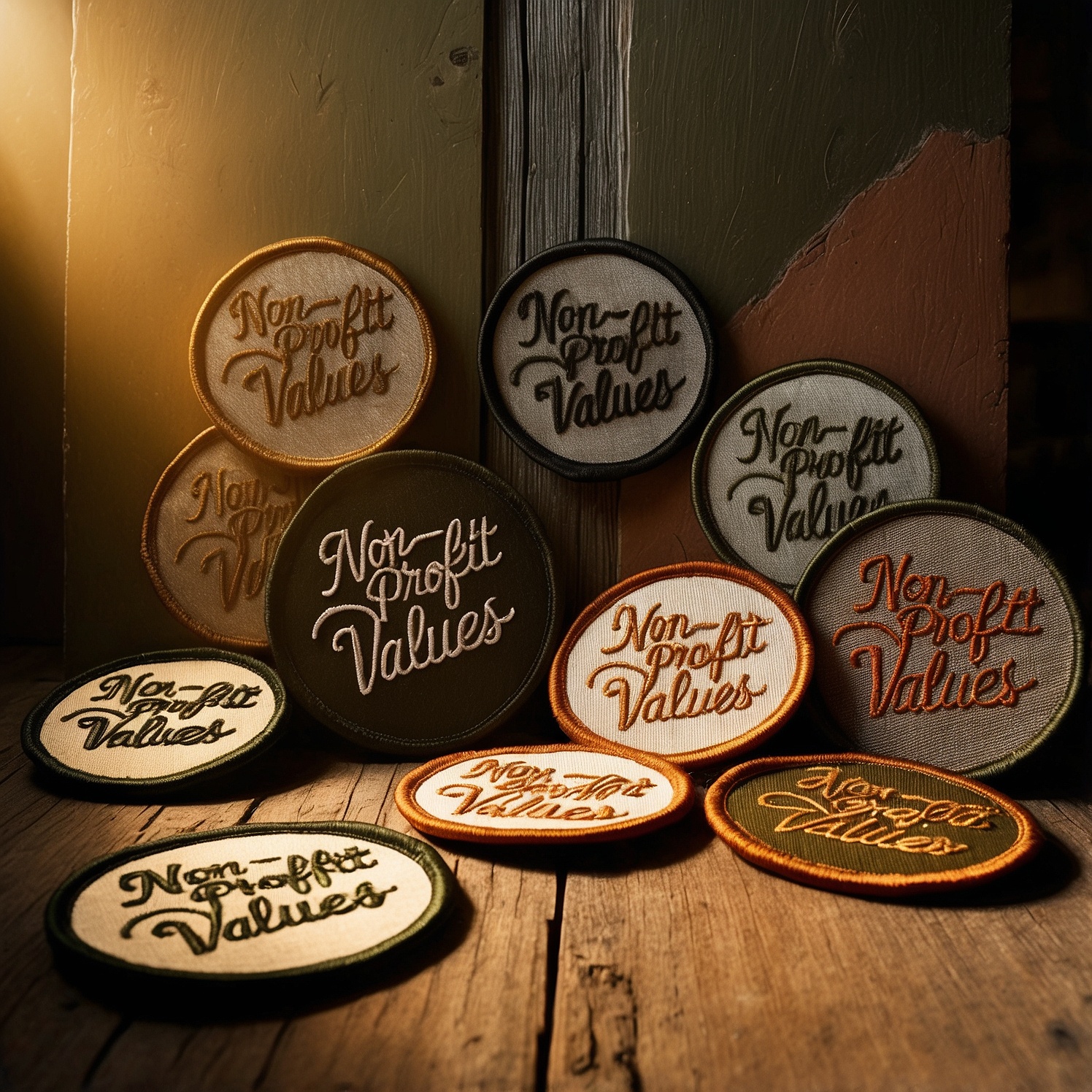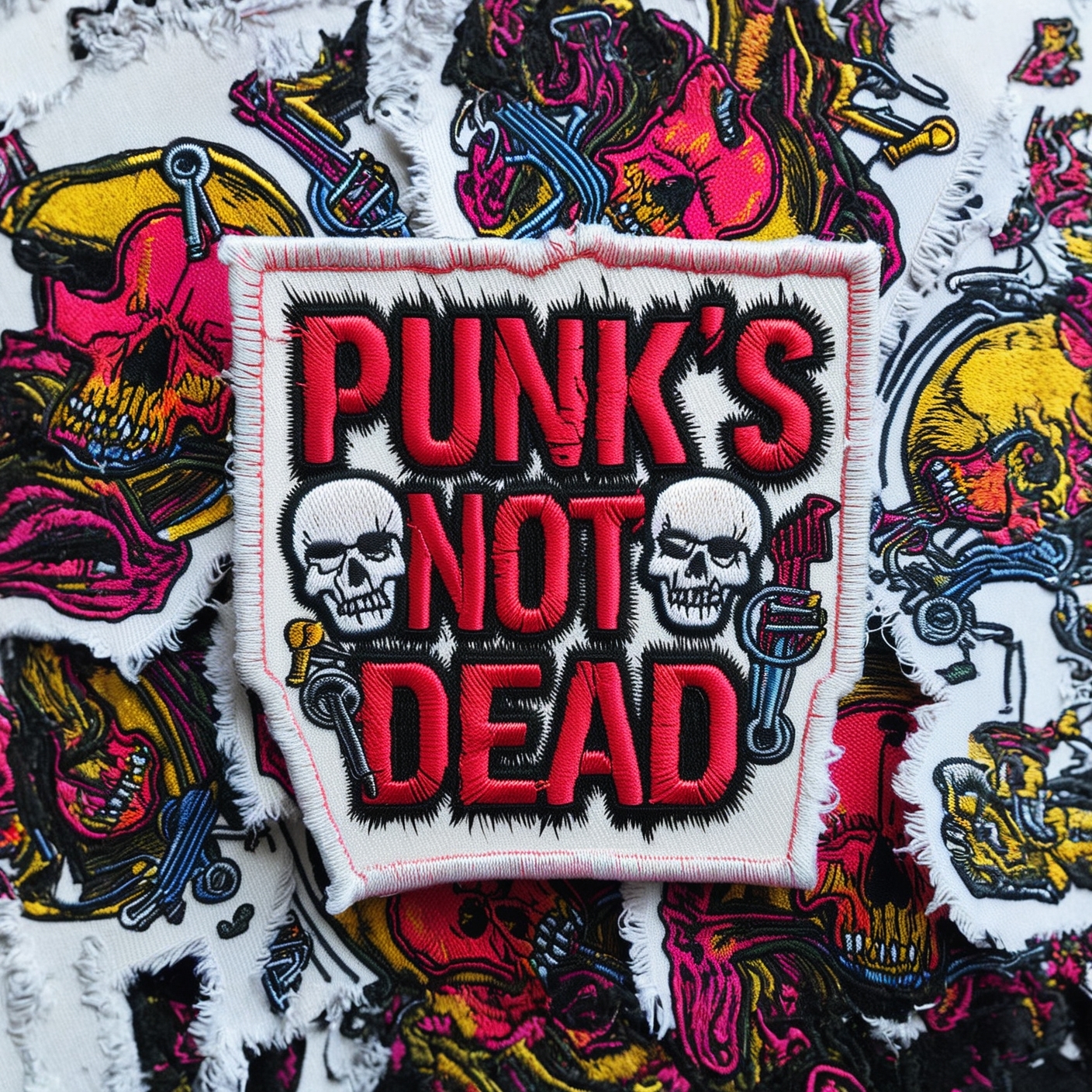Non-profit organizations are driven by a desire to make the world a better place. Whether they are focused on social justice, environmental conservation, education, or humanitarian aid, non-profits often rely on symbols, slogans, and branding to express their mission. One increasingly popular way for non-profits to reflect their values and engage with their supporters is through the use of custom patches. These patches serve as more than just decorative accessories; they are a powerful tool for communication, identity, and solidarity.
In this article, we will explore how custom patches can be designed to reflect the core values of non-profit organizations. We’ll discuss the importance of aligning patch designs with an organization’s mission, the role of symbolism and messaging, and how these patches can build stronger connections between the non-profit, its supporters, and the communities it serves. By the end, you’ll understand how custom patches can be a vital part of a non-profit’s outreach and branding efforts, helping to spread its message in a creative and impactful way.
1. The Role of Custom Patches in Non-Profit Branding
In the world of non-profits, visual identity is crucial. Non-profits use logos, colors, and slogans to express their mission and connect with their audience. Custom patches offer a unique and personal way for organizations to promote their cause and create a lasting impression on supporters, volunteers, and partners.
A. Building a Visual Identity That Resonates
Non-profit organizations often need to communicate complex ideas, such as social justice, environmental protection, or education reform, in a way that is simple, powerful, and visually appealing. Custom patches allow non-profits to encapsulate these ideas into a small, wearable form. When someone wears a patch that represents a non-profit’s values, they are making a statement about what they stand for, helping to spread awareness and build a sense of community around the cause.
For instance, a non-profit dedicated to wildlife conservation might design a custom patch featuring an endangered animal, surrounded by natural elements like trees or rivers. This imagery not only reinforces the organization’s mission but also resonates emotionally with supporters who share a passion for protecting the environment.
In the same way, a non-profit focused on gender equality could design a patch that features symbols of empowerment, such as a raised fist or interlocking gender symbols. These patches serve as visual representations of the organization’s fight for equality and help supporters express their commitment to the cause.
B. Creating a Sense of Belonging and Community
One of the most powerful functions of custom patches in non-profits is their ability to foster a sense of belonging. When volunteers, supporters, or staff members wear the same patch, it symbolizes unity and shared purpose. This sense of community is critical for non-profits, which often rely on collective action and the dedication of individuals working toward a common goal.
By designing and distributing custom patches, non-profits can create a tangible connection between the organization and its members. For example, a patch that features the non-profit’s logo and tagline can be given to volunteers as a token of appreciation, reminding them that they are part of a larger movement. These patches can also be distributed at events like fundraisers, rallies, or awareness campaigns, helping to reinforce the idea that every individual is contributing to a greater cause.
In addition to creating a sense of belonging, custom patches can serve as conversation starters. When people wear these patches in their daily lives, others may ask about the organization or cause it represents, providing an opportunity for supporters to share the non-profit’s mission with a wider audience.
C. Promoting Awareness and Advocacy
Non-profit organizations are often driven by the need to raise awareness about specific issues or challenges facing society. Whether it’s climate change, hunger, human rights, or access to education, these organizations work tirelessly to bring attention to causes that matter. Custom patches can play a crucial role in promoting awareness by serving as wearable advocacy tools.
For example, an organization working to combat homelessness might create a patch that features imagery of houses, hearts, or helping hands, alongside a slogan like “End Homelessness Now.” By distributing these patches to supporters and volunteers, the non-profit spreads its message and encourages others to engage with the cause. The more people who wear the patch, the more visibility the issue receives, potentially inspiring new supporters to join the movement.
Furthermore, custom patches can be used to mark important milestones, such as successful campaigns, legislative victories, or major fundraising achievements. For instance, a non-profit working to pass environmental protection laws might create a special patch to celebrate the passage of a landmark bill. These commemorative patches serve as reminders of the organization’s success and can motivate continued engagement from supporters.
2. Designing Custom Patches That Reflect Non-Profit Values
Designing a custom patch for a non-profit organization requires careful thought and planning. The patch must not only be visually appealing but also accurately reflect the mission, values, and goals of the organization. Every design element—from the colors and symbols to the fonts and shapes—must align with the message the non-profit wants to convey.
A. The Power of Symbolism in Patch Design
Symbols are a universal language, capable of conveying complex ideas in a simple and impactful way. For non-profit organizations, symbols can represent the values they stand for, the challenges they are addressing, or the vision they have for the future. When designing custom patches for a non-profit, it’s important to select symbols that resonate with both the organization and its supporters.
- Environmental Symbols: For non-profits focused on environmental issues, natural symbols like trees, mountains, oceans, and animals can effectively communicate their mission. For example, a non-profit dedicated to marine conservation might design a patch featuring an iconic sea creature like a dolphin or whale, surrounded by waves or coral reefs.
- Humanitarian Symbols: Non-profits working on humanitarian causes often use symbols of compassion, care, and solidarity. A heart, open hands, or a globe can represent global unity and a commitment to helping those in need. For instance, a non-profit that provides disaster relief might design a patch featuring a heart held within two hands, symbolizing care and support.
- Empowerment Symbols: Organizations focused on social justice, gender equality, or civil rights often incorporate symbols of empowerment into their patch designs. Raised fists, interlocking circles, and torches are all powerful images that represent strength, equality, and progress. A non-profit advocating for LGBTQ+ rights might design a patch featuring a rainbow flag and a fist, symbolizing pride and resistance.
When selecting symbols for a non-profit’s custom patch, it’s important to choose imagery that is both recognizable and meaningful to the organization’s supporters. These symbols help create an emotional connection with the cause, encouraging individuals to proudly wear the patch as a sign of their commitment.
B. Choosing Colors That Reflect Mission and Identity
Color plays a critical role in patch design, as different colors evoke different emotions and associations. The colors chosen for a non-profit’s custom patch should not only be aesthetically pleasing but also align with the organization’s mission and values.
- Green: Green is often associated with nature, growth, and renewal, making it an ideal color for environmental non-profits. A patch designed to promote sustainable practices might feature a vibrant green background with symbols of trees or leaves, reinforcing the organization’s commitment to protecting the planet.
- Blue: Blue represents trust, stability, and calmness. It’s a popular color for non-profits focused on humanitarian aid, peacebuilding, and mental health. For example, a non-profit that provides clean drinking water to developing countries might design a patch with a blue droplet of water, symbolizing both the organization’s mission and the importance of water security.
- Red: Red is a color of passion, energy, and action. It’s often used by non-profits focused on urgent causes like disaster relief, health care, and human rights. A non-profit dedicated to ending hunger might design a patch with a red apple or heart, symbolizing the organization’s dedication to feeding those in need.
- Purple: Purple is commonly associated with empowerment, creativity, and transformation. It’s frequently used by non-profits advocating for gender equality, LGBTQ+ rights, and education reform. A women’s empowerment organization, for example, might create a patch with a purple fist or flower, representing strength and resilience.
By carefully selecting colors that reflect the non-profit’s mission and identity, designers can create custom patches that resonate with supporters on a deep emotional level. These colors help reinforce the values of the organization and make the patch stand out as a unique symbol of advocacy.
C. Incorporating Text and Messaging
In addition to symbols and colors, the text on a custom patch plays a critical role in conveying the organization’s mission. Whether it’s the non-profit’s name, a slogan, or a call to action, the text must be clear, concise, and impactful.
- Non-Profit Name: Including the name of the non-profit on the patch is essential for branding and recognition. The font style and size should align with the organization’s visual identity, ensuring that the name is easily readable and memorable.
- Slogans or Mottos: Many non-profits have slogans or mottos that encapsulate their mission in a few words. These phrases can be included on the custom patch to reinforce the organization’s values and inspire action. For example, a non-profit focused on education might use the slogan “Empower Through Knowledge,” while a health-focused organization might use “Save Lives, Spread Hope.”
- Calls to Action: A custom patch can also serve as a call to action, encouraging people to get involved with the organization’s mission. For instance, a patch for a non-profit fighting climate change might feature the words “Act Now for the Planet,” while a patch for an organization promoting mental health might say “End the Stigma.”
The key to effective text design on a patch is brevity and clarity. The message should be easily readable, even from a distance, and should inspire action or reflection.
3. Using Custom Patches to Strengthen Non-Profit Engagement
Beyond their aesthetic value, custom patches can serve as valuable tools for strengthening engagement with volunteers, supporters, and the wider community. When used strategically, these patches can help non-profits build stronger connections with their audience and inspire deeper involvement in their cause.
A. Recognizing Volunteers and Supporters
Volunteers are the lifeblood of many non-profit organizations. Recognizing their efforts and showing appreciation for their contributions is critical for maintaining high levels of engagement and motivation. Custom patches provide a unique way to acknowledge the hard work and dedication of volunteers.
Non-profits can design special edition patches that are given to volunteers as a token of appreciation for their service. These patches can commemorate specific milestones, such as the completion of a major project or the achievement of a fundraising goal. For example, a non-profit working on a reforestation campaign might create a patch that is awarded to volunteers who plant a certain number of trees, with the patch featuring a tree or leaf symbol.
These patches not only serve as recognition for the volunteer’s contributions but also create a sense of pride and ownership in the work they’ve done. When volunteers wear their patches, they are reminded of the positive impact they’ve made, which can motivate them to continue their involvement with the organization.
B. Strengthening Relationships with Donors
Donor relationships are essential for the success of any non-profit. While thank-you letters and public recognition are common ways to acknowledge donors, custom patches provide a more personal and meaningful form of appreciation. By sending donors a beautifully designed patch that reflects the non-profit’s mission, organizations can create a lasting connection with their supporters.
For example, a non-profit working to preserve endangered species might design a patch featuring the image of a protected animal, such as a tiger or elephant. This patch could be sent to donors as a thank-you gift for their financial support. Donors are likely to keep the patch as a reminder of their contribution to the cause, and they may even wear it or display it proudly.
In addition to serving as tokens of appreciation, custom patches can also act as conversation starters. When donors wear these patches, they help spread awareness about the non-profit’s mission, potentially encouraging others to donate or get involved.
C. Inspiring Advocacy and Grassroots Movements
Grassroots advocacy is a powerful tool for non-profits looking to effect change on a large scale. By distributing custom patches to supporters, non-profits can inspire individuals to become ambassadors for their cause, spreading the organization’s message through personal networks and public events.
For example, a non-profit working to promote renewable energy might create patches with a solar panel or wind turbine design, accompanied by the slogan “Power the Future.” These patches can be distributed at rallies, protests, or educational events, encouraging supporters to wear them as a sign of solidarity. As more people wear the patches, the visibility of the issue grows, helping to build momentum for the cause.
By empowering supporters to wear and display custom patches, non-profits can create a ripple effect that amplifies their message and strengthens their movement.
4. Case Studies: Non-Profits Successfully Using Custom Patches
To further illustrate the impact of custom patches in the non-profit sector, let’s look at a few case studies of organizations that have successfully incorporated patches into their outreach and branding efforts.
A. The Wildlife Conservation Society
The Wildlife Conservation Society (WCS), a non-profit dedicated to protecting endangered species and ecosystems, has used custom patches to engage supporters and raise awareness about wildlife conservation. One of their most successful campaigns involved creating limited-edition patches featuring endangered animals, such as elephants, rhinos, and tigers.
Supporters who donated a certain amount to the organization’s conservation efforts received a patch as a thank-you gift. These patches became highly sought-after collectibles, with supporters proudly wearing them to show their commitment to protecting wildlife. The patches not only helped raise funds for WCS but also increased awareness about the importance of biodiversity conservation.
B. The Human Rights Campaign
The Human Rights Campaign (HRC), the largest LGBTQ+ advocacy group in the United States, has used custom patches as part of its Pride Month campaigns. The patches feature the organization’s iconic blue and yellow equal sign logo, along with slogans like “Equality for All” and “Love is Love.”
By distributing these patches at Pride events, rallies, and fundraisers, HRC has been able to build a strong sense of community among supporters. The patches have become symbols of LGBTQ+ pride and solidarity, with many individuals wearing them year-round to show their support for equality.
C. Doctors Without Borders
Doctors Without Borders (Médecins Sans Frontières), an international humanitarian organization that provides medical aid in crisis zones, has used custom patches to recognize the contributions of its volunteers and medical staff. The organization designed a special patch featuring its red and white logo, which is given to volunteers who complete missions in war-torn regions or areas affected by natural disasters.
These patches serve as a powerful reminder of the volunteers’ bravery and dedication, and they help build a sense of camaraderie among those who have served in the field. For Doctors Without Borders, the patches are a way to honor the sacrifices made by their staff while also reinforcing the organization’s commitment to providing medical care to those in need.
The Impact of Custom Patches on Non-Profit Outreach
Custom patches are more than just decorative accessories; they are powerful tools for non-profit organizations to communicate their values, build community, and inspire action. By designing patches that reflect the core mission of the organization, non-profits can create a lasting impression on supporters, volunteers, and donors, while also raising awareness about important issues.
From recognizing the contributions of volunteers and donors to inspiring grassroots advocacy, custom patches offer a versatile and creative way for non-profits to strengthen their engagement efforts. These patches serve as symbols of solidarity, pride, and commitment, allowing individuals to express their support for causes they care about.
As non-profits continue to seek new ways to connect with their audiences and promote their missions, custom patches will remain a valuable part of their outreach and branding strategies. Whether worn at rallies, displayed at events, or passed down as keepsakes, these patches represent the heart and soul of the non-profit world—driven by a shared vision of creating a better, more just world.
If you are interested in ordering some high-quality custom patches, feel free to call us at 877-912-6407 or fill out a FREE quote here.




